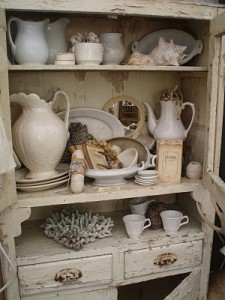Do you dread entering your laundry area because it’s filled with piles of dirty clothes and who knows what else? Now is a good time to make a clean, fresh start!
1. Visualize your ideal space.
· Picture how you would like the room to look and consider how it should better function.
2. Reduce the excess.
· Remove items that don’t belong in the laundry room and put them where they really should live.
· Eliminate items you don’t want (use up, share with others, donate, or toss).
3. Maximize the space.
· Install shelves or cabinets above and/or next to washer and dryer.
· If space allows, place a narrow rolling cart between your washer and dryer to store small items.
· Install a wall-hanging ironing board, hanging rack and/or folding table to save space.
4. Organize what you keep.
· Assign a home for each item, keeping similar items together.
· Keep frequently-used items close at hand and less-frequently used items higher or lower.
· Dedicate space for sorting dirty clothes; use bins or rolling carts to separate and contain whites, colors, delicates, and heavily soiled items.
6. Decorate the room.
· Hang artwork, put down a throw rug, purchase attractive hampers, etc. so you feel happy and peaceful in the room.
7. Develop a laundry schedule.
· Make doing laundry a ROUTINE – daily, every other day, weekly, etc.
· Make it as enjoyable as possible – fold laundry while watching TV, talking on phone, etc.
8. Get help from family members.
· Have family members empty pockets, pre-spot and put their dirty clothes in the hamper.
· Delegate the folding of clean laundry and putting clothes away.
9. Follow through!
· Complete the laundry cycle and put clothes away and have family members do the same.
· Reward yourselves with a treat when you’ve completed the process.
BONUS TIP #1: To have a truly clean start, take your accumulated laundry to your local laundromat and have them do the wash for you. Approximate cost = $1.00/lb.
BONUS TIP #2: Use Color Catchers (by Shout) or Color Grabber (by Carbona) when washing lights and darks together. They really do catch the color!
 Although we tend to hear a lot about the importance of time and task management, more often than not, there is a more effective approach, and that is in the way we manage our CHOICES. Choices are made daily and affect every aspect of our day. Some examples are:
Although we tend to hear a lot about the importance of time and task management, more often than not, there is a more effective approach, and that is in the way we manage our CHOICES. Choices are made daily and affect every aspect of our day. Some examples are:
-What to do next
-What to say
-What to eat
Many things dictate and influence our decisions such as our intuition, our subconscious, outside deadlines, ease of choice, and pain vs. pleasure just to name a few. How many decisions are made by default, rather than by design? Also, what criteria is best to use when making choices?
The easiest way to make healthy, wise choices is to have clear-set goals. Knowing what you want to accomplish or achieve, setting a time-frame to achieve said goals, and asking yourself if your choices are taking you closer to your goals or moving you farther away from them is a step in the right direction.
Although it is not ideal, letting external deadlines dictate our actions is certainly one way to manage time and tasks. We are forced to focus on that ONE task in order to meet the deadline, but when this happens, we are reactive and not proactive. While it helps to eliminate making choices, it adds unnecessary stress.
Instead, I have found that what works for me is if I ‘check in’ with myself throughout the day and ask if what I am doing is the most effective behavior to meet my goals. The goals might be to maintain good health, grow my business, be in touch with friends and family, give back to the community or create life balance. Sometimes, I catch myself making decisions that may not be the best choice, such as a glass of wine instead of a workout on the treadmill. I check in with myself and confirm that I do want to make good choices and make a mental note be more mindful. For instance, I can work out and then have a glass of wine!
I invite you to think about the choices you make and to compare them to your goals. Are they in alignment? If not, what choices can you make to make a change? Remember, all it takes is ‘baby steps’ to come closer to achieving your goals?
Here is an excerpt from an unknown author I find inspirational:
Life is like a camera…
Focus on what’s important,
Capture the good times,
Develop from the negatives,
And if things don’t work out,
Take another shot.
We can apply this concept to clutter and our homes, as well as to life:
Your home is like a camera…
It contains the “film” on which your lifestyle is imprinted.
Focus on what’s important,
Design your environment to align with your goals and inspirations.
Capture the good times,
Keep only the treasures and let go of what you don’t use or love.
Develop from the negatives,
Develop systems and habits to keep up with daily goals.
And if things don’t work out, take another shot.
Backsliding happens…just restart using those systems and habits!
I hope you find inspiration in these ideas; and remember to:
• Carve out time to go through your items and let go of the excess.
• Put similar items together where they are used when arranging what you keep.
• Develop systems to process mail, clean up, and manage your tasks.
• Don’t forget to smile and say “Cheese”… I mean “Ease.”
 Are you ready to downsize? Do you get stuck when trying to let go of items to which you have a sentimental attachment? Well, here are some tips to help you move forward:
Are you ready to downsize? Do you get stuck when trying to let go of items to which you have a sentimental attachment? Well, here are some tips to help you move forward:
HAVE A TREASURE HUNT
Consider the process of downsizing a treasure hunt. You’ve collected and inherited a plethora of items, now it’s time to select your treasures and let go of the rest.
USE MEMORY TRIGGERS
Ask yourself if you have other items that can serve as better memory triggers. For example, could you let go of brochures or souvenirs from travels because you have photos of the trip? Could you let go of Grandma’s broken sewing machine because you have her pearls? Another great option is to photograph items to preserve your memories, then release what you don’t use or love.
THE HEAD VS. HEART APPROACH
Let your storage space dictate how many of a category you will keep. You might decide that one shelf in your closet is practical to store your vases. If you have more than will fit that space, let go of your least favorite or seldom used ones.
Consider using numbers to help keep you logical, rather than emotional. For example, ask yourself how many of a specific item seems practical to keep. Four black purses seems generous. You have nine. Let go of five of your least favorite ones.
THE JOY FACTOR
Another way numbers help is by using The Joy Factor. Use a scale of 1 to 5, with 5 meaning ‘great joy‘ and 1 meaning ‘not so much’. Now, ask yourself where on the scale an items falls. If you want to downsize in a big way — you might keep only 5’s as these are your treasures.
PLEASE DON’T TOUCH!
Some people find that holding and touching an item greatly increases their attachment. If that’s you, you’ll want to have a friend, family member, or professional organizer help you. Have the other person hold up items so you can say “yay” or “nay.”
Letting go can be hard, but I assure you that the results will be well worth the effort. Living in a clutter-free environment promotes clarity, focus, peace and happiness.
What items do you find hold the most sentimental attachment?
 A client and I were talking last week about the “hazards” of having too much storage space. If there is room to store items you may or may not use in the future, the decision to keep or discard can be postponed. For some of us, those decisions have been postponed for 20 years!
A client and I were talking last week about the “hazards” of having too much storage space. If there is room to store items you may or may not use in the future, the decision to keep or discard can be postponed. For some of us, those decisions have been postponed for 20 years!
Before I became a professional organizer, I didn’t fully understand the downside of keeping items I didn’t use or love. I thought that if the house looked nice and I could find what I needed quickly, everything was copacetic. I now know that excess can often create fatigue, shame and embarrassment as well as a lack of focus and clarity.
Here’s where I got in trouble: when I decided to remove an item from my living space and the thought of getting rid of it pulled at my heartstrings, down to the basement it went. Why decide now? There’s plenty of room in the basement! My logic was:
See anything wrong with that thinking? I now have a basement full of stuff (neatly stacked and labeled, of course) that I rarely use. My new logic is:
As I’m learning to let go of anything that doesn’t make my life work better, I’m starting to de-clutter my basement. While I don’t have chunks of time to work on it, I spend an extra five or ten minutes in the basement while doing the laundry and make sure I toss or donate items every single week. In time I’ll get through it all.
I look forward to feeling freer and lighter as I let go of what I don’t use and love.
Did you ever wonder how Santa gets so much done? The secret to his success is making lists and checking them twice.
Why are lists beneficial?
– Getting the ideas out of your head helps you to think more clearly
– Writing (or typing) encourages a commitment to follow through
– Reviewing lists makes prioritizing tasks easier
– Categorizing tasks and listing baby steps help to prevent overwhelm
There’s much to be done during the holidays and lists can be a lifesaver. The information is valuable for the current year and a great reference for holidays to come. Create a holiday journal or use software, such as Excel spreadsheets, to stay on top of your tasks. If others you live with use your computer, set up a password for the electronic document to keep gift-giving ideas a secret.
What to keep track of:
– A timeline, by week, with what you plan on accomplishing, and when
– A holiday card or eCard list – noting which style card you sent
– Decorating – themes, details, etc.
– Gifts – people and charities and what you plan to give
– A shopping list – include stores, eRetailers and what you hope to purchase
– Party planning – menus, guests, grocery lists, etc.
– Post-holiday review – note what worked and what didn’t
May this be a low-stress holiday season filled with high joy; and may you accomplish your goals with clarity and ease.